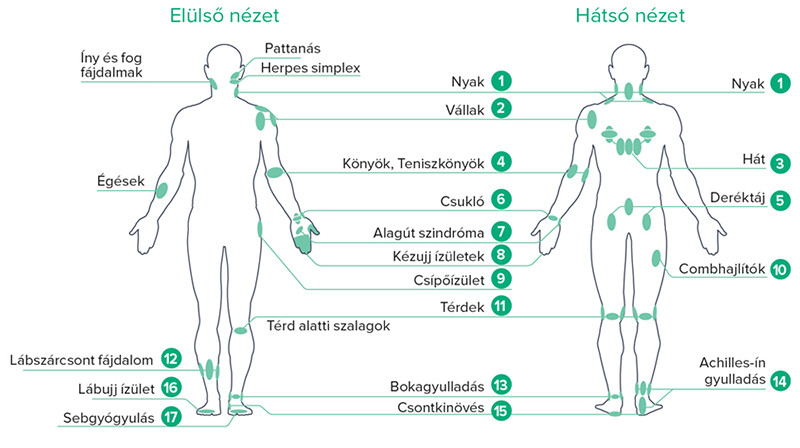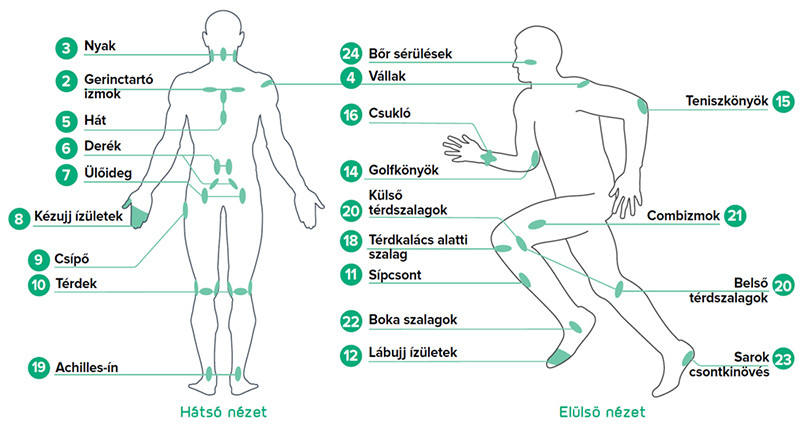B-Cure Softlaser Device in Practice
The B-Cure softlaser is one of the simplest and safest devices to use. This is thanks to its careful design and execution. I will show you how to use the B-Cure Laser for treating various complaints.
The B-Cure softlaser is one of the simplest and safest devices to use. This is thanks to its careful design and execution. I will show you how to use the B-Cure Laser for treating various complaints.
The Israeli manufacturer Good-Energies' B-Cure Laser device family includes several models that operate identically but differ in power. Currently, three models are available: Classic, the Sport Pro, and the Pro versions.
All emit an 808 nm infrared, invisible beam, resulting in almost identical biological effects. The only meaningful difference between the devices is the amount of energy emitted per minute. The Classic has the lowest output: 3.75 Joules, while the Sport Pro and Pro emit 5.0 Joules.
This primarily affects the treatment duration. Higher power means shorter treatment time. Of course, the effect is somewhat stronger but not by a large margin.
For effectiveness, you need to hold it on a given spot longer than with competitor SafeLaser, Personal-Laser, and Energy-Laser devices.
B-Cure devices belong to laser class I, meaning the emitted laser beam is completely safe for the eyes even without protective goggles. The B-Cure uses pulsed laser, so the treatment does not generate heat and therefore cannot cause harm (such as burns).
If you don’t have a softlaser device yet, you can purchase one here.
Performing B-Cure Softlaser Treatment
1., Turn on the device and set the treatment time
- 6 minutes on the B-Cure Laser Classic device
- 5 minutes on the B-Cure Sport Pro and B-Cure Pro devices
2., Place the device on the painful area directly on the skin. The laser light does not penetrate through clothes or bandages, making the treatment ineffective!
3., Hold the device motionless there until the set time elapses. When the treatment time ends, the device will shut off.
Attention: softlaser treatment is only effective at the specified dose! Any shorter treatment will not stimulate biostimulation.
Extending treatment time may be considered if you want to treat a deeply located structure in the body. The necessary treatment time in such cases will be provided by your treating physician or physiotherapist.
B-Cure devices treat an area of 4.5 cm2 at once. If the treatment area is larger than the head, you should treat multiple points (i.e., move the device) to cover the entire area and treat every spot.
Treat a given problem from multiple directions, both longitudinally and transversely or from both sides. (For example, the wrist from the palm side, the back of the hand, and both sides)
During B-Cure softlaser treatments, you generally feel nothing. Softlaser does not cause noticeable warming or redness on the treated area.
The treatment can reduce pain even from the first session in some cases.
Actual effects develop slowly and require at least 10-14 days or even longer.
The treatment is biostimulatory, meaning it stimulates your body’s inflammation and pain relief processes. This triggers the healing process, which brings about the effect and results. This does not happen in minutes!
Therefore, continue softlaser treatment until your symptoms have completely disappeared.
For fresh injuries or acute inflammation, treatments can be repeated hourly. For chronic complaints, one treatment a day or every other day is sufficient.
Softlaser Treatment Points


Practical Execution of the Treatment
Neck Pain
3 treatment points: alongside the vertebrae, both sides of the neck (below the earlobes), and the hollow behind the jawbone.

Back and Lower Back Pain, Lumbago, Herniated Disc, Sciatica
The principle is to treat the painful area both longitudinally and transversely. Wherever pain arises along the spine, apply the treatment this way, whether on the neck, back, or lumbar region.
Shoulder Pain
3-4 points on the shoulder joint area and the outer part of the upper arm.

Tennis Elbow (epicondylitis, golfer’s elbow)
Treat 3 points: the elbow crease, and both right and left sides of the elbow.

Wrist Pain (so-called carpal tunnel syndrome)
The inner wrist fold, the inner wrist perpendicular to the fold, above the base joint of the thumb (on the palm cushion), the side of the wrist under the thumb and under the little finger as well.

Joint Pain in Fingers (Rheumatoid small joint inflammation)
The right and left sides of every finger individually. Also, the fold between the palm and fingers.
Hip Joint Pain
Over the joint, both longitudinally and transversely (in case of sensitivity, also above the knee area).

Knee Pain, Knee Injury, Post-Surgery
Back of the knee, crease, right and left sides of the knee (possibly also under the kneecap).

Bone Spur (Heel Spur)
The plantar surface of the heel, inner edge of the foot, both edges of the heel bone, back of the heel.
Achilles Tendon Inflammation, Injury, Post-Surgery
The back of the heel and the point above it, right and left sides of the heel bone.

Toe Joint Pain
The junction between toes and sole, above the big toe and little toe.

Slow-Healing Wounds, Bedsores, and Ulcers
- Fresh, open wound: During the first treatment, treat the entire area for 5-8 minutes, then take a 5-minute break, and repeat treatments and breaks for at least one hour. Afterwards, treat the area twice a day for 5-8 minutes each until the wound fully heals. When treating an open wound, do not touch the laser device directly to the wound but hold it as close as possible.
- Acute condition (lesion formed within 1-2 days): treat once or twice daily for the first 10 days, then switch to every other day until complete healing.
- Chronic, slowly healing conditions: recommend one B-Cure softlaser treatment every other day. This must be done persistently for up to 3-4 months in ulcer cases.



